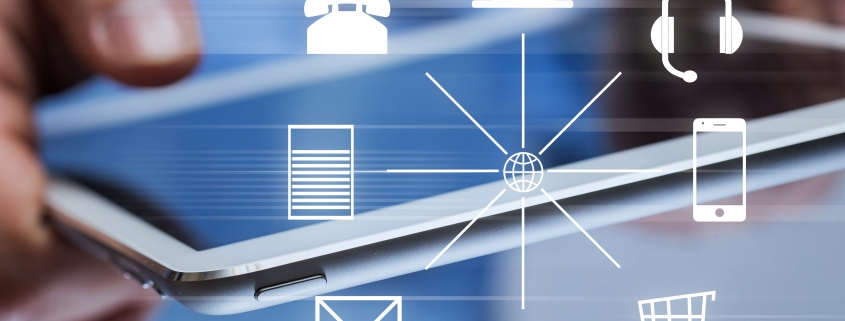Defining Omni-channel Customer Experience.
What is Omni-channel?
And omni-channel experience?
Omni-channel vs Multi-channel
Do you have a multi-channel or an omni-channel customer engagement strategy? Do you know the differences between the two? Let’s start with definitions …
Multi-channel (i.e., “many” channels), while less integrated, allows customers to purchase wherever they prefer to browse and shop.
Companies with this approach are adopting two or more channels to engage their customers, however, they are not necessarily focused on delivering a seamless / consistent message across multiple touch-points. Furthermore, these programs don’t necessarily factor in optimizing the customer experience based on the different devices (e.g. smartphones, tablets and laptops) clients use to interact with the business.
Omni-channel (meaning, “all” channels) unifies sales and marketing to create a single customer experience across your brand.
While companies using this approach also use multiple channels to engage their customers they distinguish themselves through two additional factors; consistency and focus on devices involved within client interactions. These businesses are diligent to ensure that their customers receive the same experience and message through different channels and devices involved within their interactions with the firm. For example, a company that provides customers with the ability to engage it through a mobile app, social media portal and website would be focused to ensure that the look and feel as well as the messages they receive across each touch-point are seamless.
Omni-channel and multi-channel marketing are two unique strategies that both aim to reach consumers and potential consumers by leveraging mult ple channels. Marketers must make the shift to focus on omni-channel efforts in order to increase customer retention and in turn, revenue.
What does omni-channel customer experience look like?
According to My Customer, if a bank customer has a question about a fluctuation in their mortgage rate, which happens to be an Adjustable Rate Mortgage. The customer might call to speak with a live representative. A few years later, when their rate fluctuates again, he or she might call to ask another question. As the customer is calling, the agent will be able to pull up all the details about the customer and their specific situation as well as find out whether the question they asked a few years ago was resolved. Assisting the customer becomes easier for the agent with the context of that customer’s history. Without the omni-channel context, they would have to frustrate the customer with several background questions before being able to resolve their request.
Moreover, the multi-modal capacities inherent to an omni-channel experience enable an agent to text the customer a confirmation and/or a link to further info while the customer is still on the phone. If the customer is late for a meeting and wants to continue the conversation by email, or follow up a few hours later by live chat, that’s also easy. Any agent who continues the engagement will be able to pick up where the previous agents left off in full context, presenting “one face” to the customer—and a surprisingly smart face, at that. Almost like hitting the pause button on a DVR and resuming the program right where you left off.
Why is omni-channel superior?
Let’s take a look at another great example of a full-fledged omni-channel experience – the Disney app.
Disney’s various customer touchpoints are so interconnected that the user experience never ends. You don’t need to buy a ticket online, show up at the park, and take a gamble on lining up anymore.
Now, you buy a ticket, download the app, scan your Fastpasses, check ride times, and explore customized content before even setting foot in the park.
Once you’re at the park, you can easily navigate your way around, find Disney characters on a live, and interactive map before get your picture taken at the store, have it show up on your app, and purchase when you get home.

The entire experience is a never-ending sensory overload of the Disney brand that contains one critical factor: Consistent, seamless integration. No matter how or where a customer interacts, the shopping experience is the same.
Why choose Omni-channel customer experience management?
According to Aberdeen Essentials, companies with well-defined omni-channel customer experience management programs achieve a 91% higher year-over-year increase in customer retention rate on average, compared to organizations without omni-channel programs. These organizations also average a 3.4% increase in customer lifetime value, while those without omni-channel programs actually diminish customer lifetime value by .7% year-over-year.
Another study by Business Insider found that shoppers who engaged on multiple channels made purchases more often:

Final thoughts…
The majority of shoppers now hit multiple touchpoints before making a purchase. Limiting yourself to one or two platforms and lacking the seamless integration you’ve seen here can be detrimental to your long-term growth. In the end, an omni-channel customer experience is the most granular, detailed, and efficient customer experience an organization or representative can provide.
Always look for new outlets and ways to connect each and every channel. Create an experience that isn’t locked into a single platform. Rather, create an experience that can be completed and repeated on each.
Want to know innovative ways to gain insights using an omni-channel strategy? Contact a customer experience research specialist at BARE International today.











